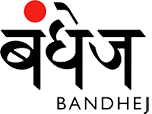
HANDCRAFTED, Sustainable Fashion
Currency

AJRAKH : The Ancient Craft of Block-Printing
Dhamadka, a small village in Kutch some 45kms from Bhuj is famous for the Ajrakh prints traditionally used by the Maldhari (pastoral) communities of Kutch and Sindh. The special feature of ajrakh is that it is block-printed on both sides of the fabric with the impressions matching precisely, making the cloth reversible, with the same depth of print and colour on both sides. It requires great skill and patience as the pattern needs to match perfectly on both sides.
Creating an ajrakh is a long and laborious process of resist printing. The fabric goes through 16 stages of processing, multiple printing and dyeing and can take a month to produce. The geometric patterns are printed with wooden blocks and dyed in madder or alizarine red and indigo blue, using natural mineral and vegetable dyes. The meenakari ajrakh, which has deeper and more vibrant colours, is printed again in alum, and selected areas are over-printed with resist paste before dyeing again in the indigo bath.

The art of block-printing on cotton cloth has been practised in India for over 4500 years. Excavations at the sites of the Indus Valley Civilization provide evidence that block-printing on cotton cloth in geometric patterns was possibly one of the oldest printing methods in the Indian subcontinent. Large quantities of coarsely woven, indigo dyed fabrics were exported from the Indus Valley to the Persian Gulf, by the sea route to Egypt and Babylon. The Egyptians used this blue cloth to wrap the mummies before burial. Printed textiles in geometric patterns similar to the Kutch prints have been excavations at the Red Sea ports at Fostat near Cairo. The Newberry Collection at the Ashmolean Museum, Oxford, has more than 1225 pieces of resist printed and mordant dyed fabrics. Dr. Ruth Barnes’ catalogue on the collection mentions that the fabrics came from Gujarat.
It is believed that the word ajrakh is derived from the word azarukh, meaning ‘blue’ in Arabic and Persian, and ajrakh is believed to have the universe, or the sky as its theme. The blue in the design symbolizes the sky, the red symbolizes twilight, and the night is indicated by black. The white motifs interspersed throughout the fabric are like stars on a dark night.
 |
 |
Ajrakh has become a popular fabric in urban markets today and every printer in Dhamadka has more work than he can handle. The quality of work has improved substantially as select urban customers are willing to pay the price for quality.










